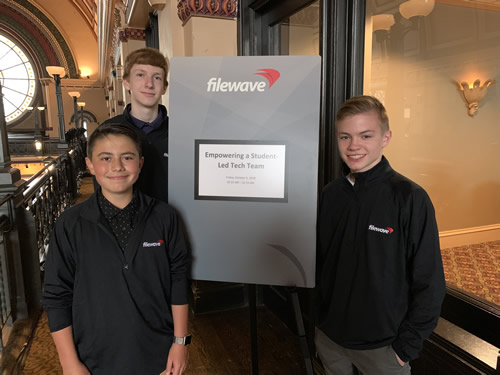One-to-one device initiatives have exploded in popularity and have dramatically changed the classroom environment. Dedicated device access doesn’t just benefit students through improved educational outcomes, but also benefits districts by enabling innovation and providing a clear return on educational investment. IT teams, however, can struggle with the greatly increased burdens of managing fragmented device platforms, and the increased staffing that 1:1 initiatives often demand can limit funding for other important initiatives.
In 2016, Lafayette (IN) Catholic School System was preparing to make our entire system 1:1 by adding grades pre-K through six to the middle and high school program already in place. We’re a relatively small system, with 1,100 students across four school buildings. Our technology department manages those buildings, as well as two parish offices and one central office, containing a mix of MacBooks, iPads, and other desktop devices.
Streamlining device management
With a rollout set to double the number of devices we managed to 1,300 across five campuses, we knew we had to find a way to control costs. To optimize our endpoint management with remote capabilities, we turned to FileWave. It was when we began to dive deeper into its user-based permissions and other key functionalities that an innovative solution began to take shape.
What would it take for us to create a student-led tech team for all Tier 1 support? Apart from saving the costs of hiring new permanent and temporary staff members, this strategy would free up our staff to focus on larger projects. It would also empower our digital native students to pursue their passions.
Securing buy-in was challenging, and the implementation of our student-led tech team has been a continual learning experience, but in the two years since its inception, we’ve seen incredible growth. Graduates of our student team have joined university tech departments, secured prestigious full-ride scholarships, and carried their passions forward to pursue careers in IT. We’ve seen students turn around their overall academic performance as a result of joining our tech team. And we’ve come in under budget for the last three years while accomplishing expanded projects and tech pushes.
Implementing this program was a large undertaking full of missteps that informed how we grew and where we focused our efforts. If your school system decides to implement a student-led support team, what worked for us may not be a concrete answer for you. However, these core tips were pivotal for our implementation and may help you in your efforts.
Tip #1: Find the right tools and failsafes
It takes a lot of trust to give students access to your school system’s device management, and rightly so. It wasn’t enough for us to have a lengthy training process and code of ethics for student team members—we needed a way to restrict what they could access, as well as a means to revert any changes implemented in bad faith. We found what we were looking for with FileWave’s user-based permissions and the ability to revert changes should a student user go rogue. The fact that we could use our already selected endpoint management solution as a pedagogical tool was even better.
Tip #2: Build tech support into the day
To support our team, we created a tech support class to ensure one team member was available every class period of the day to troubleshoot and solve issues with student devices. By reducing our time spent on tech support, we can get more done while empowering student learning and building a culture of trust in our team.
Tip #3: Empower student curiosity
Digital natives don’t always think the way we do. Their different solutions and methods for working through issues can pay huge rewards if you meet them partway. Whether that means a team member developing a custom bit of code to automatically reset all admin passwords to stop a rogue user or chasing down strange errors, give your team members some room to run. You’ll be pleasantly surprised by the quality of work that comes from a little bit of trust.
Tip #4: Take advantage of service hours
We’re lucky enough to be able to pay summer interns in our program; not all school systems have the same funding available. Many districts require fulfillment of service hours as a component of education. See if you can get tech support work classified as such to help offset student team costs and give them an alternate means to meet requirements.
Tip #5: Embrace the redo
This is the most important lesson we learned in implementing our team: Not all progress is forward progress. Your students will make mistakes, and so will you; learn from them and keep charging ahead! We had to image our new devices three times in our first summer deployment, and we learned tremendously and refined our process each time. You will too.
- 4 ways to encourage play in education - April 25, 2024
- CoSN IT Leader Spotlight: Lisa Higgins - April 25, 2024
- It’s time to pay student teachers - April 25, 2024


